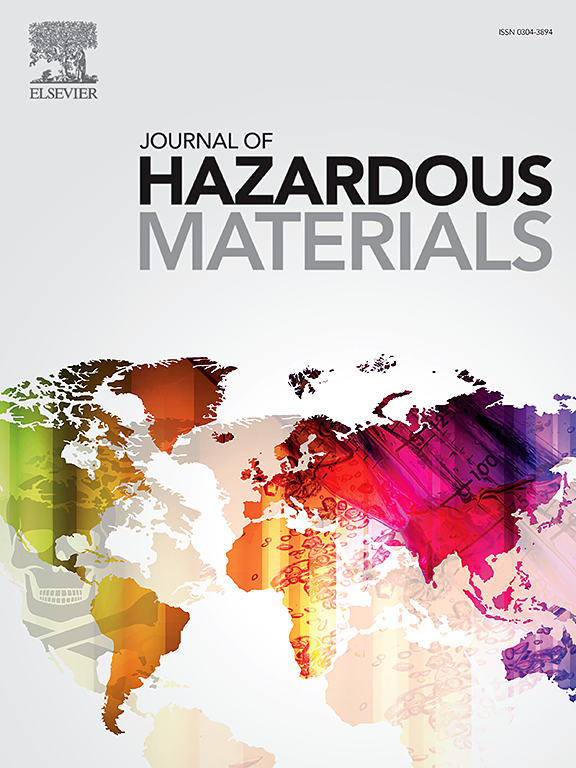青藏高原生态系统抗生素耐药基因的循环传递网络与反向贡献模式
IF 12.2
1区 环境科学与生态学
Q1 ENGINEERING, ENVIRONMENTAL
引用次数: 0
摘要
抗生素耐药基因(ARGs)的传播对全球公共卫生构成重大挑战,但人们对极端生态系统内的传播机制知之甚少。利用宏基因组学和宏基因组组装基因组(MAG)分析,研究了青藏高原完整食物链(土壤、蚯蚓、牧草、牦牛、鼠兔、雪雀、牧民)中ARG的组成、风险和途径。与传统理论相反,ARG组合与微生物多样性呈负相关。我们以mag为中心的方法提供了直接证据,表明水平基因转移(HGT),包括18种ARG的惊人细菌-古菌跨域转移,主导了ARG的传播,专门的“ARG储存库”宿主门(如假单胞菌)将ARG的功能多样性与整体微生物群落结构解离。蚯蚓具有“ARG生物放大器”的作用,能富集79.81%的土壤ARG,对牧草贡献49.43%。至关重要的是,高端消费者(雪雀、牧民)不仅仅是接受者;它们的排泄物将高风险ARG的“反向贡献”带回生态系统,从而建立起一个完整的ARG循环反馈网络。牧民粪便包含所有I-IV级高风险ARG,而雪雀粪便包含II/IV级高风险ARG,突出了人类活动对这种极端环境下ARG风险升级的影响。这些发现,特别是新的HGT机制和宿主专业化见解,挑战了传统的单向传播模型,为在“同一个健康”框架内管理极端生态系统中的抗生素耐药性风险提供了新的范例。本文章由计算机程序翻译,如有差异,请以英文原文为准。

Circular Transmission Network and Reverse Contribution Pattern of Antibiotic Resistance Genes in the Qinghai-Tibet Plateau Ecosystem
The dissemination of antibiotic resistance genes (ARGs) poses a major global public health challenge, yet transmission mechanisms within extreme ecosystems are poorly understood. Using metagenomics and metagenome-assembled genome (MAG) analysis, we investigated ARG composition, risk, and pathways across a complete Qinghai-Tibet Plateau food chain (soil, earthworm, herbage, yak, pika, snowfinch, herdsman). Contrary to conventional theory, ARG assemblages correlated negatively with microbial diversity. Our MAG-centric approach provided direct evidence that Horizontal Gene Transfer (HGT), including striking bacteria-archaea cross-domain transfer of 18 ARGs, predominates ARG dissemination, with specialized ‘ARG reservoir’ host phyla (e.g., Pseudomonadota) decoupling ARG functional diversity from overall microbial community structure. Earthworms function as ‘ARG bioamplifiers’, enriching 79.81% of soil ARGs and contributing 49.43% to herbage. Crucially, apex consumers (snowfinches, herdsmen) are not merely recipients; their feces drive a significant ‘reverse contribution’ of high-risk ARGs back into the ecosystem, establishing a complete circular ARG feedback network. Herdsman feces contained all Rank I-IV high-risk ARGs, while snowfinch feces held Rank II/IV, highlighting human activities’ impact on escalating ARG risks in this extreme setting. These findings, particularly the novel HGT mechanisms and host specialization insights, challenge the traditional unidirectional transmission model, presenting a new paradigm for managing antibiotic resistance risks in extreme ecosystems within the One Health framework.
求助全文
通过发布文献求助,成功后即可免费获取论文全文。
去求助
来源期刊

Journal of Hazardous Materials
工程技术-工程:环境
CiteScore
25.40
自引率
5.90%
发文量
3059
审稿时长
58 days
期刊介绍:
The Journal of Hazardous Materials serves as a global platform for promoting cutting-edge research in the field of Environmental Science and Engineering. Our publication features a wide range of articles, including full-length research papers, review articles, and perspectives, with the aim of enhancing our understanding of the dangers and risks associated with various materials concerning public health and the environment. It is important to note that the term "environmental contaminants" refers specifically to substances that pose hazardous effects through contamination, while excluding those that do not have such impacts on the environment or human health. Moreover, we emphasize the distinction between wastes and hazardous materials in order to provide further clarity on the scope of the journal. We have a keen interest in exploring specific compounds and microbial agents that have adverse effects on the environment.
 求助内容:
求助内容: 应助结果提醒方式:
应助结果提醒方式:


